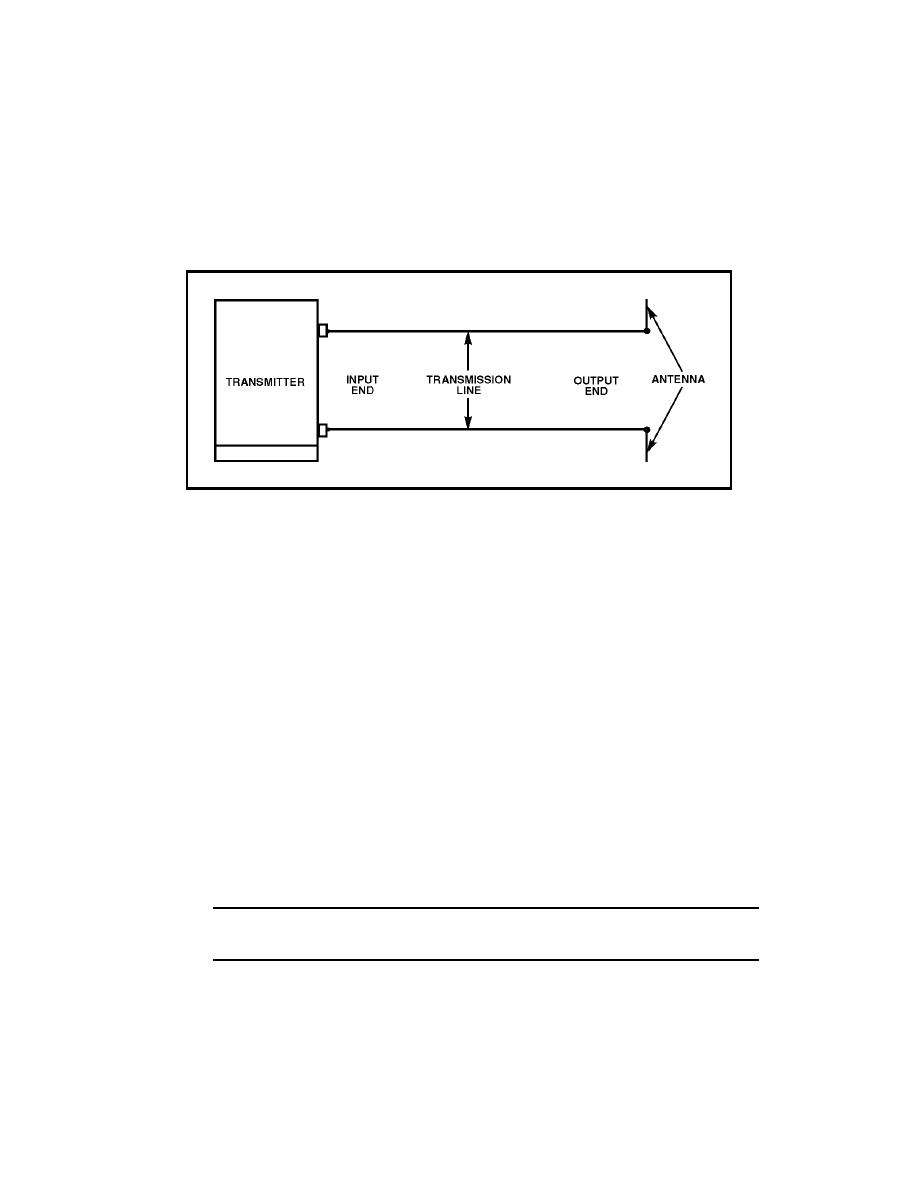
TC 9-64 _________________________________________________________________________
TERMINOLOGY
3-4. All transmission lines have two ends (see figure 3-1). The end of a two-
wire transmission line connected to a source is ordinarily called the input end
or the generator end. Other names given to this end are transmitter end,
sending end, and source. The other end of the line is called the output end or
receiving end. Other names given to the output end are load end and sink.
Figure 3-1. Basic Transmission Line
3-5. You can describe a transmission line in terms of its impedance. The
ratio of voltage to current (Ein/Iin) at the input end is known as the input
transmission line and its load, the antenna. The ratio of voltage to current at
impedance presented to the load by the transmission line and its source. If an
infinitely long transmission line could be used, the ratio of voltage to current
at any point on that transmission line would be some particular value of
impedance. This impedance is known as the characteristic impedance.
TYPES OF TRANSMISSION MEDIUMS
3-6. The Army uses many different types of transmission mediums in its
electronic applications. Each medium (line or waveguide) has a certain
characteristic impedance value, current-carrying capacity, and physical
shape and is designed to meet a particular requirement.
3-7. The five types of transmission mediums discussed in this chapter
include parallel line, twisted pair, shielded pair, coaxial line, and waveguides.
The use of a particular line depends, among other things, on the applied
frequency, the power-handling capabilities, and the type of installation.
Note. In the following paragraphs, we mention losses several times. Losses
are discussed more thoroughly later in this chapter.
Parallel Line
3-8. One type of parallel line is the two-wire open line illustrated in
figure 3-2. This line consists of two wires that are generally spaced from 2 to
6 inches apart by insulating spacers. This type of line is most often used for
power lines, rural telephone lines, and telegraph lines. It is sometimes used
3-2



 Previous Page
Previous Page
